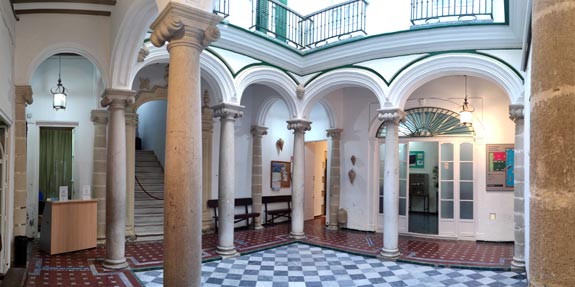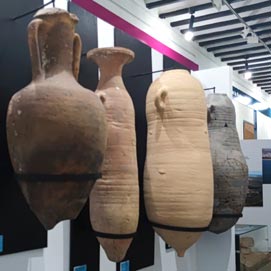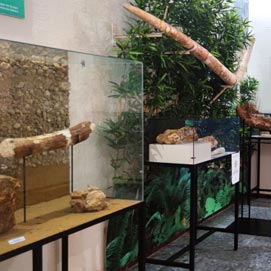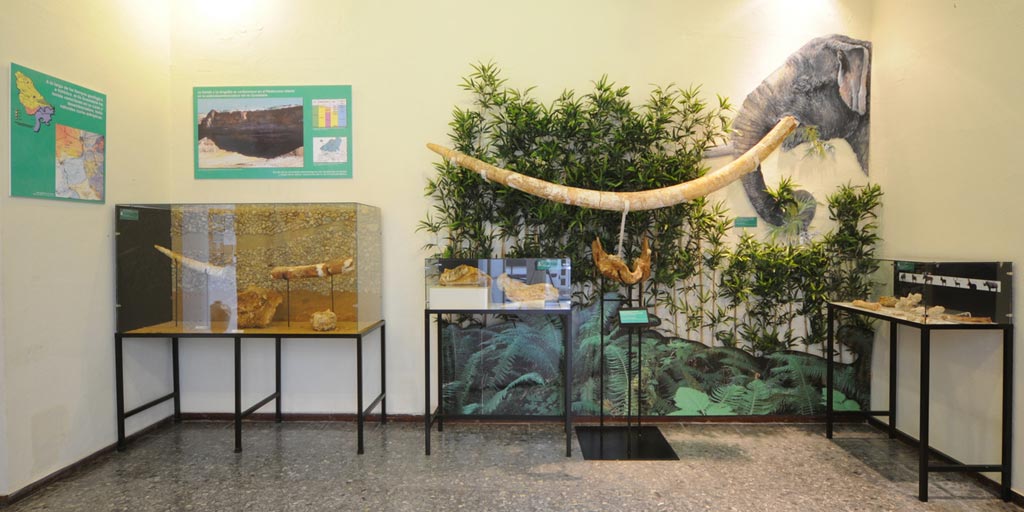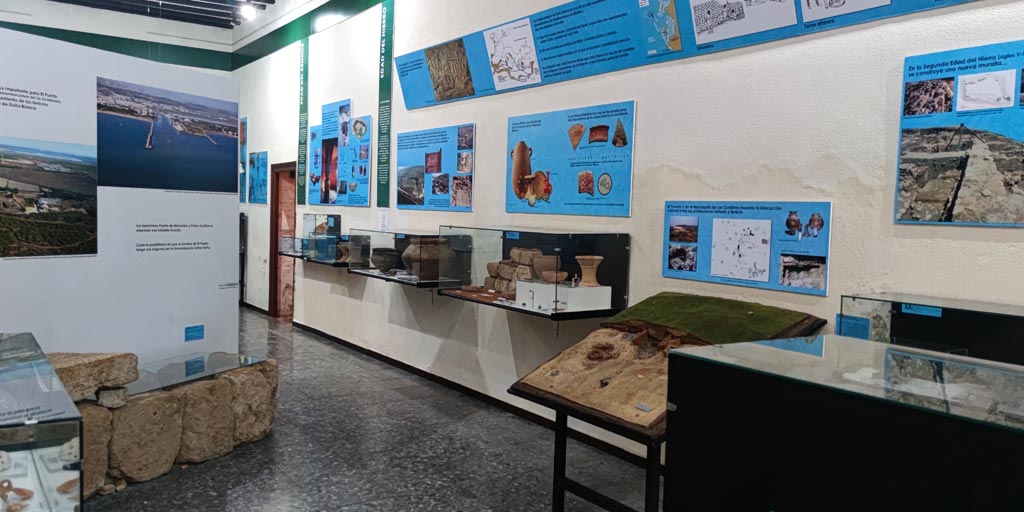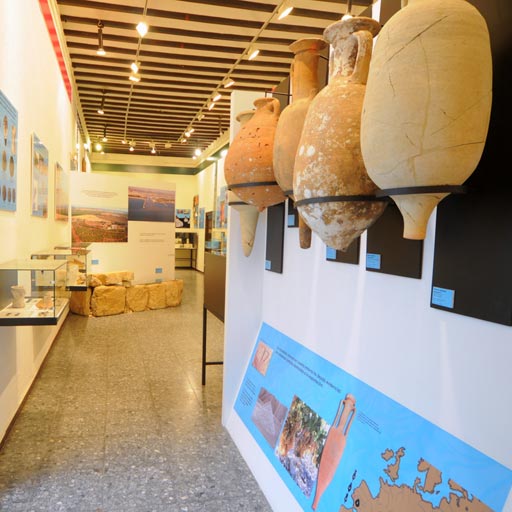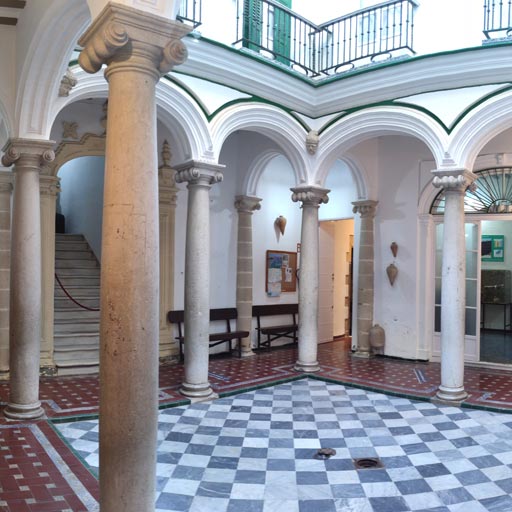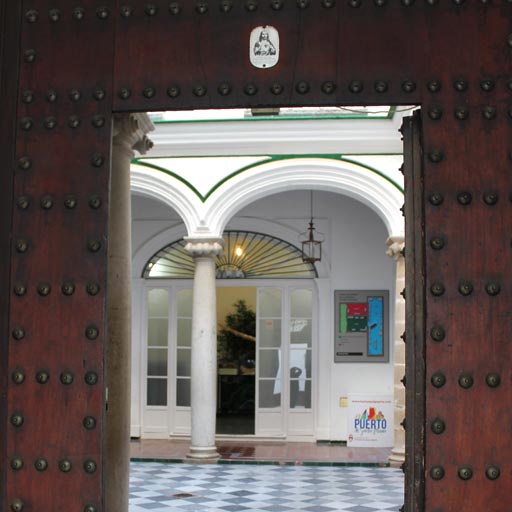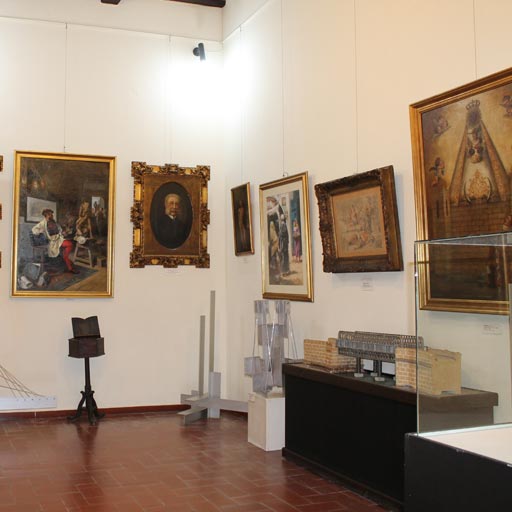The Municipal Archaeological Museum is, from 1982, the local, public centre responsible for preserving, restoring and disseminating the most outstanding archaeological, artistic and ethnographic assets of the historical heritage of El Puerto de Santa María.
- C/ Pagador, nº 1
- Tfno. (+34) 956 542 705
- ptopatri@elpuertodesantamaria.es
The archaeology section consists of material goods from our prehistoric and historical past. Paleontology rests include the reamins of cetaceans, sharks, and bivalves from the Late Cenozoic Era found at El Manantial Site as well as jaws and defenses of Elephans Meridionalis and mastodons from the Plio-Pleistocene Period found La Florida Site.
Prehistoric sites in El Puerto comprise El Aculadero Site, from the Archaic Lower Palaeolithic, which is considered one of the most ancient ones in Europe. There also material rests to cultures from Middle Palaeolithic and Post-Paleolithic found at La Puntilla Beach and Levante Beach and also at La Campiña area.
There also Neolithic and Chalcolithic remains found in the areas known as Cantarranas, Las Viñas, and Pocito Chico, which were small villages in the third millenium BC and the first sedentary populations in the area.
The Late Bronze Age, also known as "Tartessian Age" and belonging in the last millenium, shows a heavy population as well as cultural relationships with thalassocracies from the East Mediterranean. The Torre de Doña Blanca Site and its necropolis, known as Las Cumbres, stand out for their historical importance . The first one is a tell with findings of six population levels ranging from the eighth century to the late third century BC. They consist of archaeological materials from the Orientalizing Phoenician Period of the West Mediterranean. Las Cumbres Necropolis stand out for its Tumulus Nº 1, with cremation tombs from the eighth century BC. The coastal area shows constant trade between the fifth and fourth centuries, as shown by the exhibited remains, which were found in the salting factories from the Punic Period.
Romanization appears in the countryside and on the coast, with pottery workshops with amphorae, agricultural villages and rural necropolis, such as that of Las Viñas, which dates back to the period between the first and the fourth century AD.
Visigothic culture can be seen in the discoveries of the El Barranco Estate, with remains of necropolis and grave goods such as daggers and ritual pitchers.
As for the Middle Ages, the Museum has an important, archaeological treasure from Islamic farmhouses from the twelfth and the thirteenth century.
Between the sixteenth and the nineteenth century, the archaeological pieces show the trade relationships of El Puerto with America, an interesting collection of dinnerware from the sixteenth and the seventeenth centuries found at Vicotira Monastery and Isaac Peral Square
This section mainly consists of pictorial and sculptural works by contemporary, local artists.
Among these works, we must remark those by Francisco Lameyer (1825-1877), a Romantic painter whose themes include African and Eastern atmospheres as well as Andalusian Costumbrismo. His Most remarkable work is a drawing entitled Sacking and Fire of Rome.
There also works by Eulogio Varela (1868-1955), namely paintings with traditional themes -such The Dance and Berruguete's Studio- as well as his collection of bookplates and modernist drawings. This style is visibly represented in his illustrations, engravings and watercolours. Enrique Ochoa's work (1891-1977) also shows modernist features. Known as `The Painter of Music´ during his time, he is present in this section through his works Lady in a Black Mantilla, A Poor Poet, and The Dwarf, among others.
De los artistas coetáneos cuentan los fondos museísticos con obras de Rafael Alberti (1902), que experimenta un resultado muy personal combinando la pintura y la poesía en sus "Liricografías". Ricardo Summers "Serny" (1908) participa del tema femenino: "Reposo" o "Flores blancas"; y de las escenas de carnaval, en el pastel o grabados con el título "Carnaval". De Juan Lara (1921-1995), portador de un realismo tradicional, se muestra una representación de sus acuarelas, como la de tema árabe "La morita de los pajaritos". En cuanto al insigne artista Manolo Prieto (1912-1991), el Museo posee una interesante muestra de sus más representativos bocetos de carteles, así como, una serie de medallas de temas eróticos. La Escultura estructuralista de Fernando Jesús (1924), pintores que poseen un estilo preciso y riguroso que dominan los temas locales con detalle.
The museum collection also has works by contemporary artists -namely by Rafael Alberti (1902-1999), who shows a very personal result by combinig painting and poetry in his Lyricographies. Ricardo Summers "Serny" (1908-1995) paints feminine themes at his works Resting and White Flowers and carnival scenes -either pastel drawings or engravings- entitled Carnival. The museum collection also includes some watercolours by Juan Lara (1921-1995), who was a traditional Realist, such as the Arabic-themed painting The Moorish Girl with the Birds. As for the famous artist Manolo Prieto (1912-1991), who created the famous Osborne Bull, the Museum has an interesting sample of his most representative sketches of posters, as well as a series of erotic-themed medals
This section also has paintings and small-sized, religious and historical carvings by unknown authors from the twelfth to the twentieth centuries. Among the first one, it is worth mentioning some portraits of monarchs and an eighteenth-century carving depicting Sain Sebastian.Sus fondos están compuestos por bienes materiales de nuestro pasado prehistórico e histórico.
